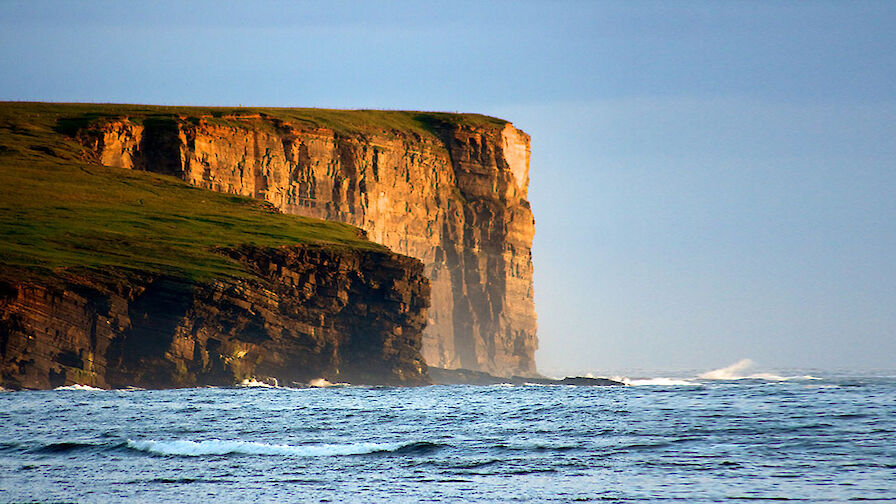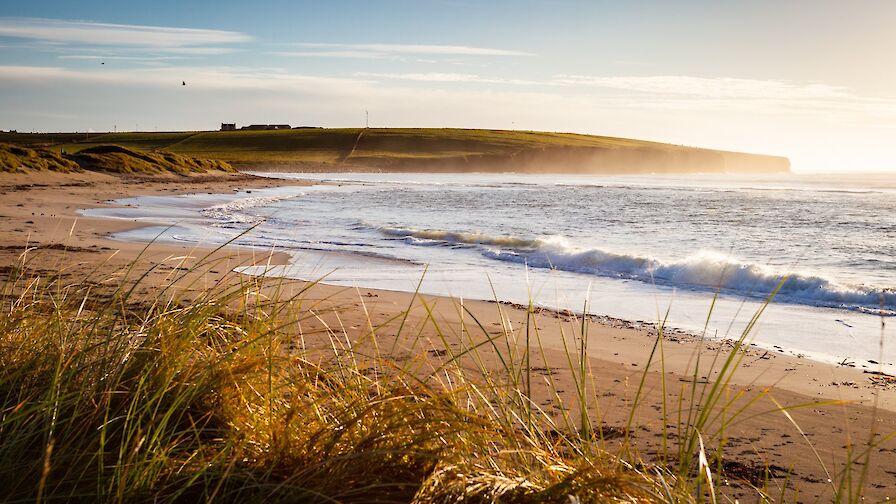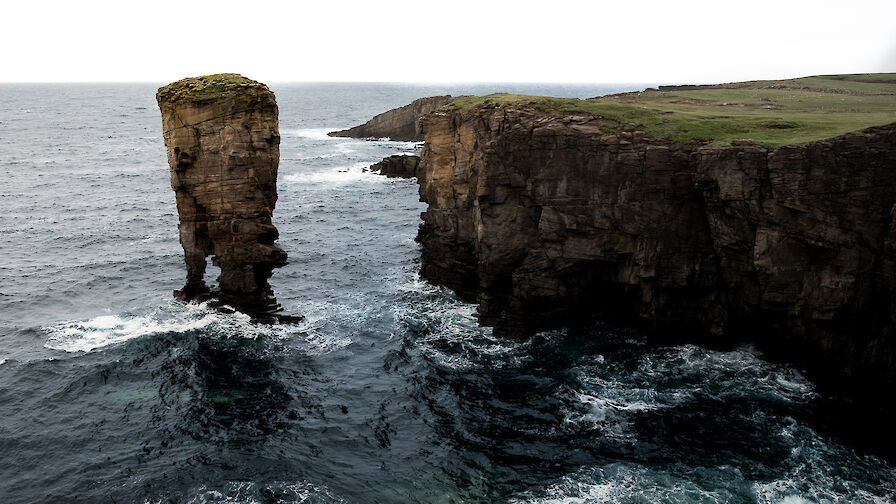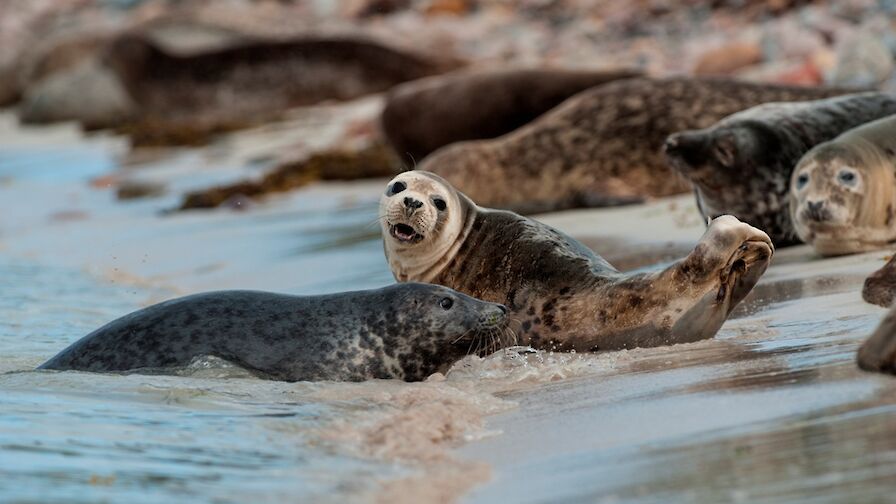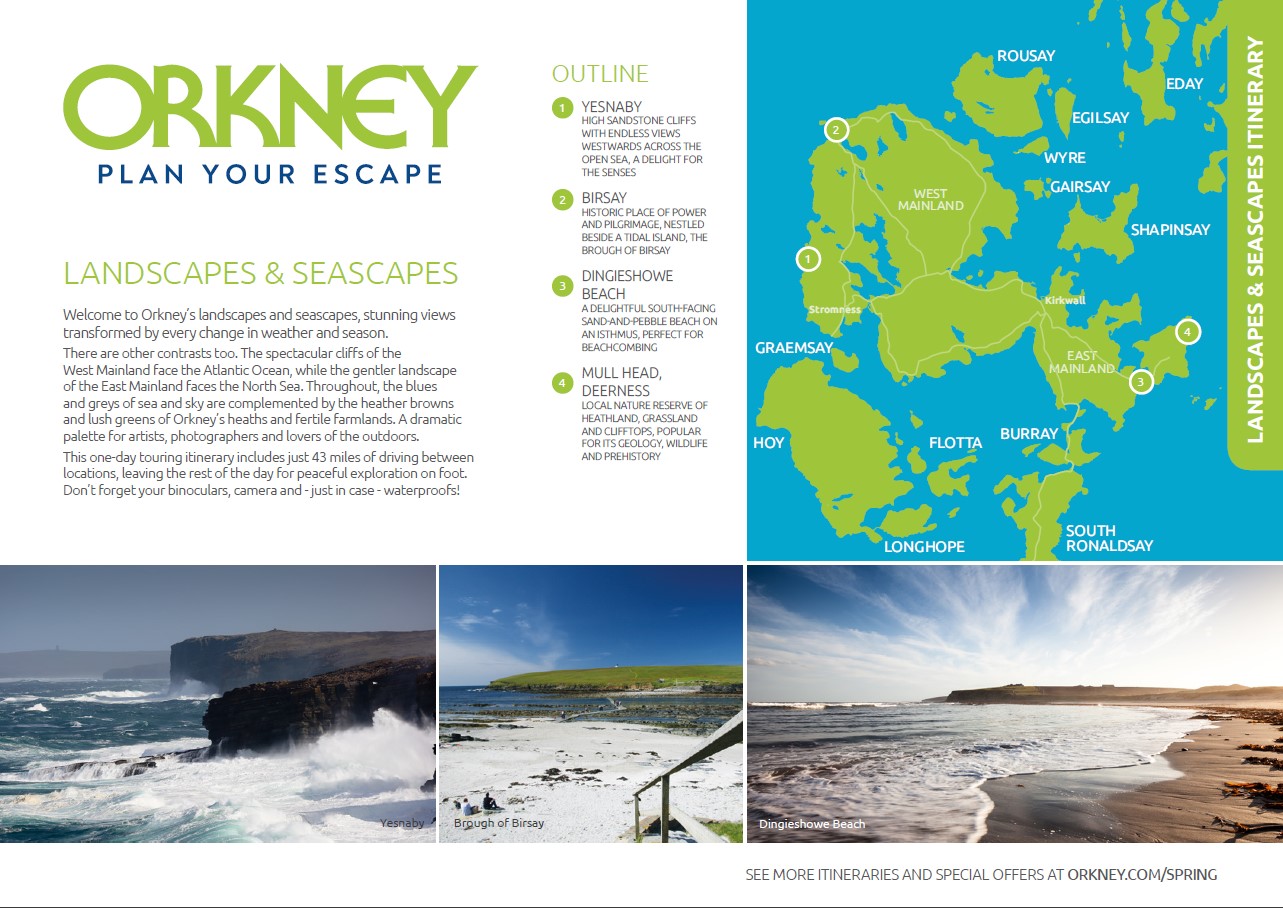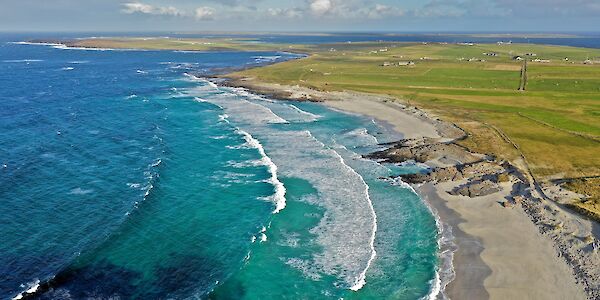Welcome to Orkney’s landscapes and seascapes, stunning views transformed by every change in weather and season.
There are other contrasts too. The spectacular cliffs of the West Mainland face the Atlantic Ocean, while the gentler landscape of the East Mainland faces the North Sea. Throughout, the blues and greys of sea and sky are complemented by the heather browns and greens of Orkney’s heaths and fertile farmlands. A dramatic palette for artists, photographers and lovers of the outdoors.
This touring itinerary includes just 43 miles of driving between locations, leaving the rest of the day for peaceful exploration on foot. Don’t forget your binoculars, camera and - just in case - waterproofs!
Your Itinerary
- 1. Yesnaby
The dramatic old red sandstone sea-cliffs of Yesnaby on the west coast of the Orkney Mainland stand tall, proudly defying the seas and winds of the Atlantic. The rocks are about 400 million years old, and erosion sculpts them into attractive shapes such as the iconic Yesnaby Castle, a distinctive and photogenic two-legged sea stack sometimes described as a smaller version of its more famous cousin, the Old Man of Hoy.
Whether in the teeth of an Atlantic gale or the stillness of a calm day, you’ll find Yesnaby invigorating. There are clifftop walks to both north and south, but be careful near the cliff edge and on any slippery footpaths. Keep your eyes peeled for birds on the wing or roosting on the cliffs, and for seals in the sea far below you. Orkney’s grey seal population breeds in October-November and common seals breed in the summer, but these inquisitive sea-mammals can be spotted year-round if you are observant and fortunate.
- 2. Birsay
Located on the north-west of the Mainland, the historic village of Palace had such a favourable location that it was once the centre of the Viking Earldom. Easy access to the sea and with an exceptionally fertile hinterland, it's no wonder that earls and bishops chose this place. Look for seals and seabirds, and hunt the beach next to the Brough of Birsay for rare cowrie shells, known locally as groatie buckies, said to bring luck to their finders.
At low tide you can cross to the Brough and wander amongst the remains of viking houses, barns, a church and monastery and even a sauna. Follow the path up to the lighthouse for a bracing walk rewarded with an expansive view. Do check the tide times before visiting the Brough.
- 3. Dingieshowe
Depending on the wind direction, the pleasant sandy beach at dingieshowe can be very sheltered, a perfect place for leisurely beachcombing and rock pool exploration. Just along from the small car park there is a mound containing the remains of an Iron Age coastal broch or fort. It is said that the mound was an important assembly place in the Viking period. Please help us keep our beaches clean by collecting any plastic waste and putting it in the bins in the car park.
- 4. Mull Head, Deerness
The Mull Head local nature reserve in Deerness comprises over 200 acres of coastal grassland, heath and sea cliff, with a cosy visitor centre to help you get your bearings and show you the wildlife, geology and prehistory to look out for. There are leaflets available here or from the Kirkwall Visitor Information Centre if you want to study them in advance of your visit. A short walk from the car park will bring you to the roof of a partially collapsed sea cave known as the Gloup, a spectacular sight when the sea crashes through the cave entrance. There is a fenced viewing platform but be careful here and as you follow the signposted pathway along the cliff.
Other places to visit if you have more time
There is lots to see and do in every corner of Orkney whatever the season; the quieter months are a great time to sightsee at a slower pace. If you have time to explore further, see the suggested sites below:
- Wideford Hill near Kirkwall provides a panoramic view of Orkney’s landscape and scatter of islands, with an impressive chambered tomb on the steep hillside overlooking the Bay of Firth.
- The RSPB manages 13 nature reserves in Orkney. From the shelter of the Eddie Balfour hen harrier hide at RSPB Cottascarth and Rendall Moss, you are able to watch some of our moorland bird species including perhaps the iconic hen harriers.
- At the Orkneyinga Saga Centre in Orphir, beside the sheltered waters of Scapa Flow, there is a delightful circular walk enabling you to enjoy views of the flow where nature, history and modern industry sit easily together.
- The Orkney Museum in Kirkwall and the Stromness Museum both have excellent displays about Orkney’s natural history, the perfect way to prepare for a day’s exploration out of doors.
